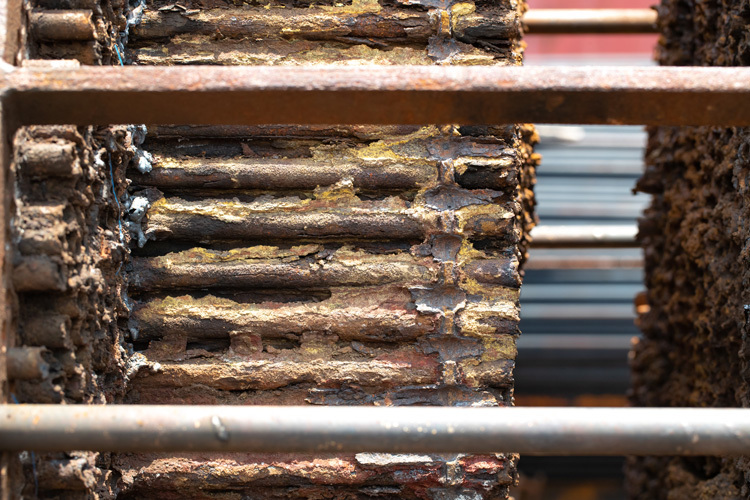Introduction
Fouling-resistant heat exchangers are specially designed systems that minimize the accumulation of unwanted deposits, such as scale, dirt, and biological growth, on heat transfer surfaces. Fouling is a common issue in many industrial processes, leading to decreased efficiency, higher energy consumption, and more frequent maintenance. These heat exchangers utilize advanced materials, surface treatments, and design features to prevent fouling, ensuring optimal performance over longer periods. Industries such as chemical processing, oil and gas, power generation, and water treatment can greatly benefit from the use of fouling-resistant heat exchangers, as they not only reduce maintenance costs but also enhance the efficiency and lifespan of the heat exchangers. By addressing fouling challenges effectively, these systems contribute to more sustainable and cost-effective operations in various industries.
Enhanced Surface Materials: Fouling-resistant heat exchangers often incorporate specialized surface materials, such as coatings or alloys, that reduce the adhesion of particles and contaminants, preventing the buildup of fouling agents. These materials can include hydrophobic coatings, which make it more difficult for debris and microorganisms to settle on heat transfer surfaces.
Self-Cleaning Mechanisms: Some advanced fouling-resistant heat exchangers feature self-cleaning mechanisms, such as vibration or pulsation technology, that periodically shake or disturb the heat exchanger surfaces to dislodge any accumulated particles or microorganisms. This reduces the need for manual cleaning and extends operational periods between maintenance.
Innovative Heat Transfer Design: The design of these heat exchangers is optimized for reducing fouling by utilizing enhanced heat transfer surfaces, such as extended surfaces, fins, or turbulence promoters, which disrupt the accumulation of particles and prevent fouling. These designs promote better fluid movement and prevent stagnant zones where fouling could occur.
Temperature and Flow Optimization: To mitigate fouling, these heat exchangers are engineered to operate at optimal temperature and flow conditions. By maintaining the right balance, fouling-resistant heat exchangers minimize the formation of deposits, as extreme conditions can often lead to accelerated fouling.
Chemical Resistance: Fouling-resistant heat exchanger are built with materials or coatings that are resistant to chemical corrosion or damage from the fluids they handle. This is particularly important in industries like chemical processing, where aggressive fluids can contribute to fouling and decrease the lifespan of conventional heat exchangers.
Reduced Maintenance Costs: One of the key benefits of fouling-resistant heat exchanger is the significant reduction in maintenance costs. The reduction of fouling and scaling means less frequent cleaning, fewer system shutdowns, and longer intervals between replacements, which directly translates to savings in operational costs and downtime.
Longer Operational Lifespan: The resistance to fouling helps increase the operational lifespan of these heat exchangers. By preventing the build-up of harmful deposits, fouling-resistant heat exchangers can maintain their heat transfer efficiency and overall performance over a longer period compared to conventional models.
Energy Efficiency: Fouling-resistant heat exchanger contribute to better energy efficiency by maintaining a higher level of heat transfer effectiveness. With less fouling buildup, the heat exchanger can operate closer to its designed efficiency, minimizing energy losses that would otherwise occur due to degraded performance.
Biocidal Features: Some fouling-resistant heat exchanger incorporate biocidal treatments or antimicrobial surfaces to prevent the growth of biofilms, which are often responsible for fouling in marine or cooling tower applications. These bioactive treatments help control microbial fouling, which can be a significant issue in industries like food processing and pharmaceuticals.
Applications in Harsh Environments: Fouling-resistant heat exchanger are highly beneficial in harsh environments where exposure to corrosive or contaminated fluids is frequent. Industries such as oil and gas, desalination plants, and wastewater treatment often require heat exchangers that can handle these challenging conditions without succumbing to fouling-related issues.
Conclusion
Fouling-resistant heat exchangers offer significant advantages in maintaining efficiency and reducing operational costs in industries where fouling is a persistent issue. Through innovative materials, self-cleaning mechanisms, and optimized design features, these heat exchangers provide superior performance and longevity, ensuring a more reliable and sustainable solution for heat transfer applications. The reduction in maintenance requirements, improved energy efficiency, and longer operational lifespans make fouling-resistant heat exchangers a wise investment for businesses seeking to optimize their fluid handling systems. As industries continue to evolve and demand higher performance, fouling-resistant heat exchangers will play a key role in advancing heat exchange technology, contributing to both economic and environmental benefits.

